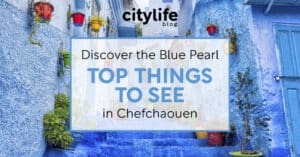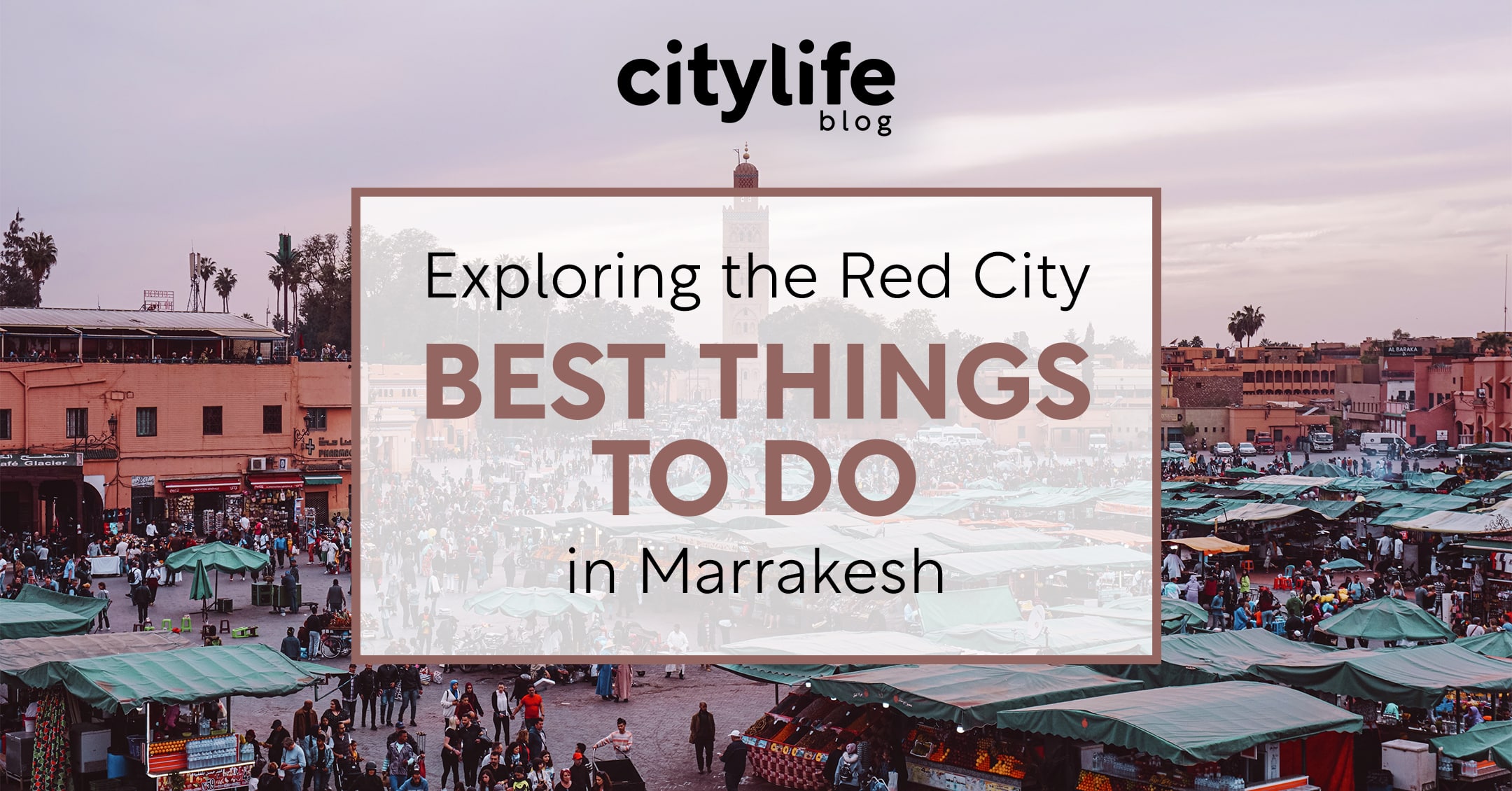
When beginning your journey to Africa, Marrakesh is a perfect place to start! Marrakesh, famously known as The Red City, is a bustling mix of old-world charm and modern glamour. With its maze-like alleyways, bustling markets, opulent palaces and luxurious gardens, the city offers its visitors a look into a completely different way of life. Make sure you experience it all with our guide to the best things to do in Marrakesh! And of course, don’t forget to check out our 3 Day Guide to Marrakesh and our 5 Day Guide to Marrakesh at the bottom of this article.
Do you want to explore even more of Morocco? Then make sure to check out all of our Morocco city guides, our delicious guide to Morocco’s best food and of course, our guide to packing and travelling safely in Morocco! We’ve got everything you need to prepare for your next travel to Morocco!
1. Wander the Jemaa el-Fnaa Square
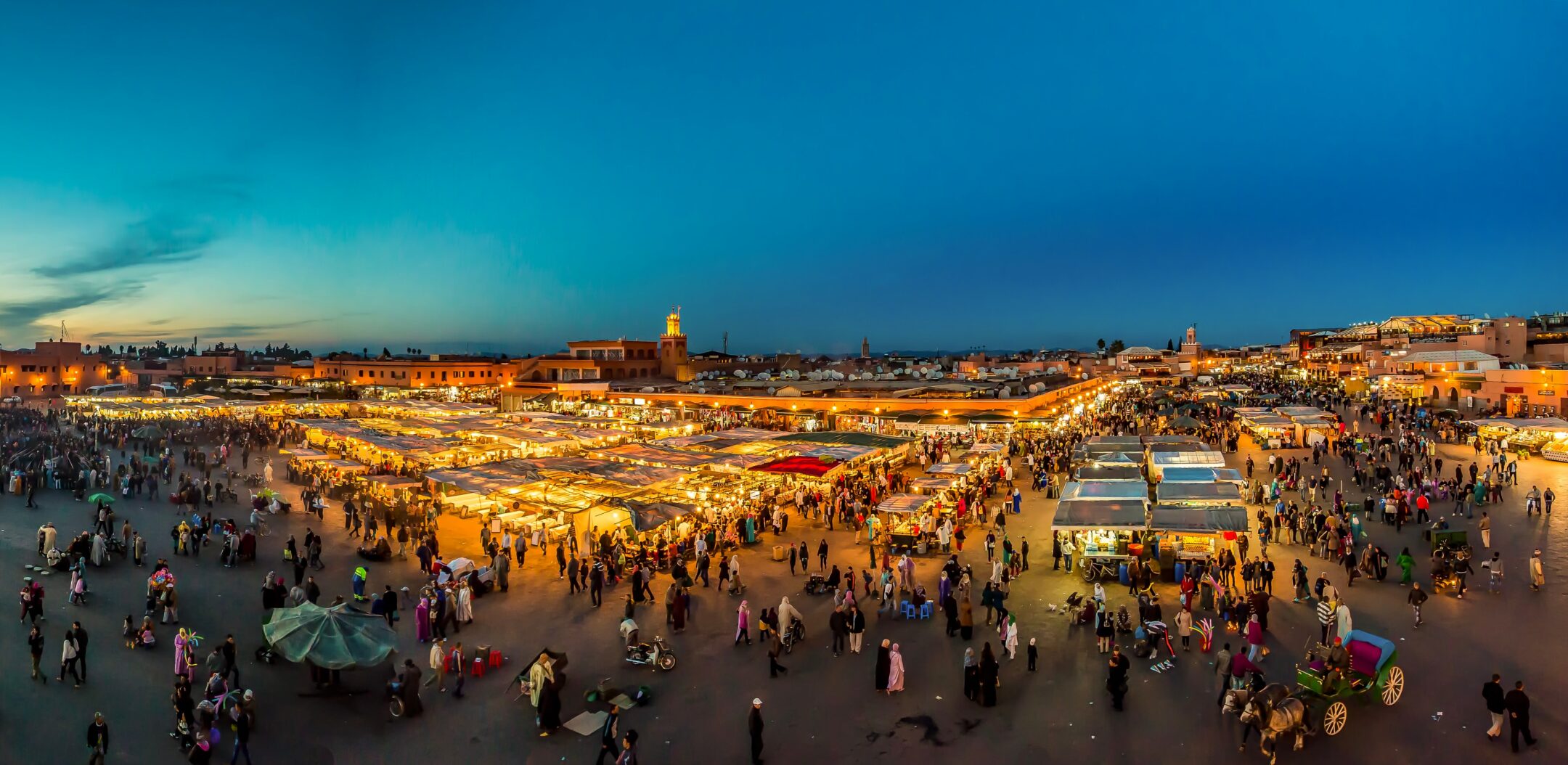
The walking tours on Citylife’s South Morocco & African Adventure trips all end in the bustling Jemaa el-Fnaa Square! See all upcoming Morocco tours in our Morocco Travel Calendar.
From the early morning hours to the latest of nights, there will always be something to explore at the Jenaa el-Fnaa square. From street performers, food stalls and vendors to endless visitors from around the world. This is truly where you’ll find an unforgettable atmosphere and is absolutely one of the best things to see in Marrakesh!
2. Marvel at the Koutoubia Mosque
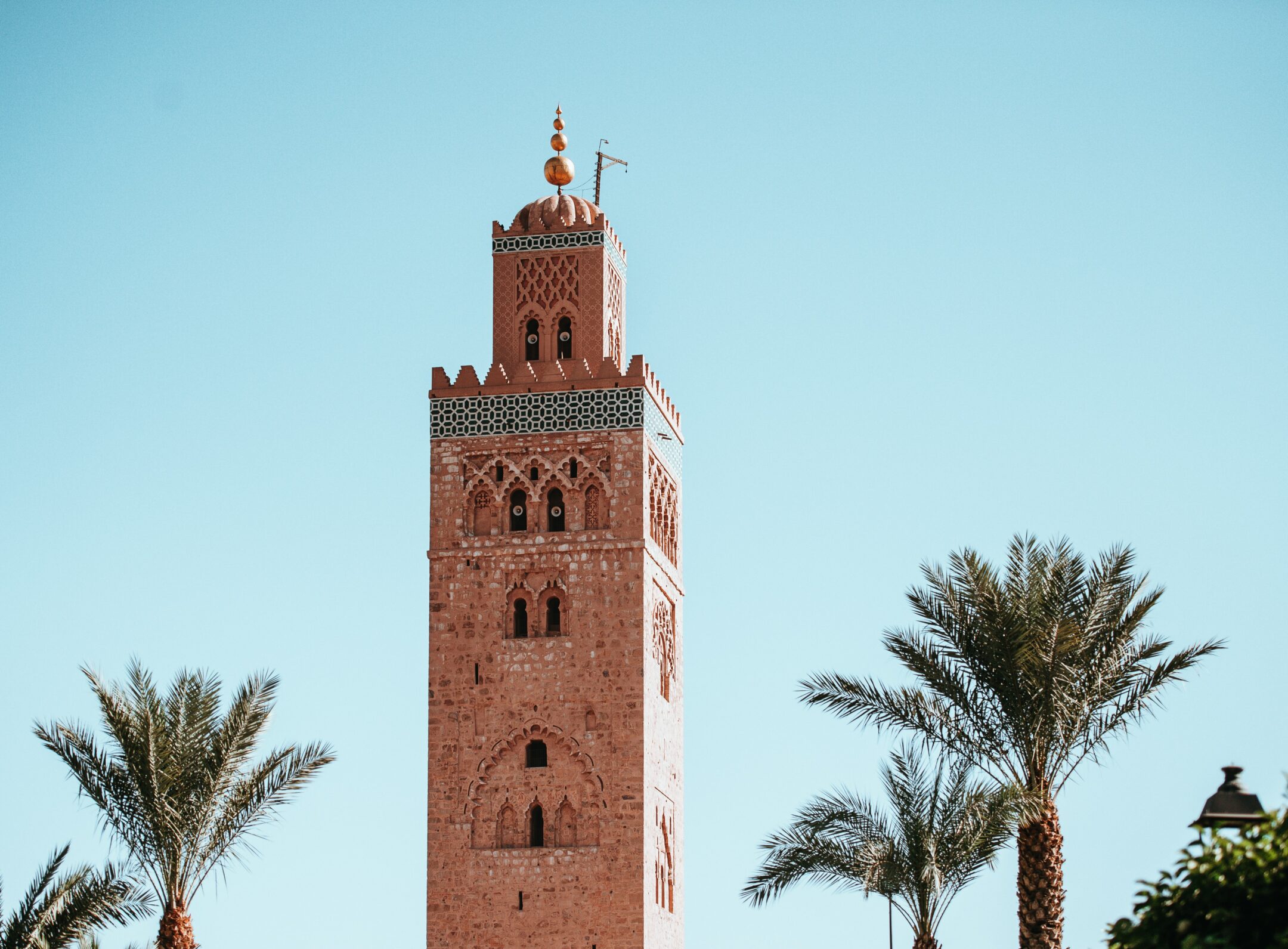
The walking tours on Citylife’s South Morocco & African Adventure trips all pass by the beautiful Koutoubia Mosque! See all upcoming Morocco tours in our Morocco Travel Calendar.
Set aside some time to gaze at Marrakesh’s beautiful Koutoubia Mosque. Although non-muslims are not permitted to enter, its beautiful architecture can surely be enjoyed from the outside. Especially its historic minaret, which graces the city’s skyline and offers visitors a look into local Moroccan lifestyle.
3. Experience a True Moroccan Pharmacy
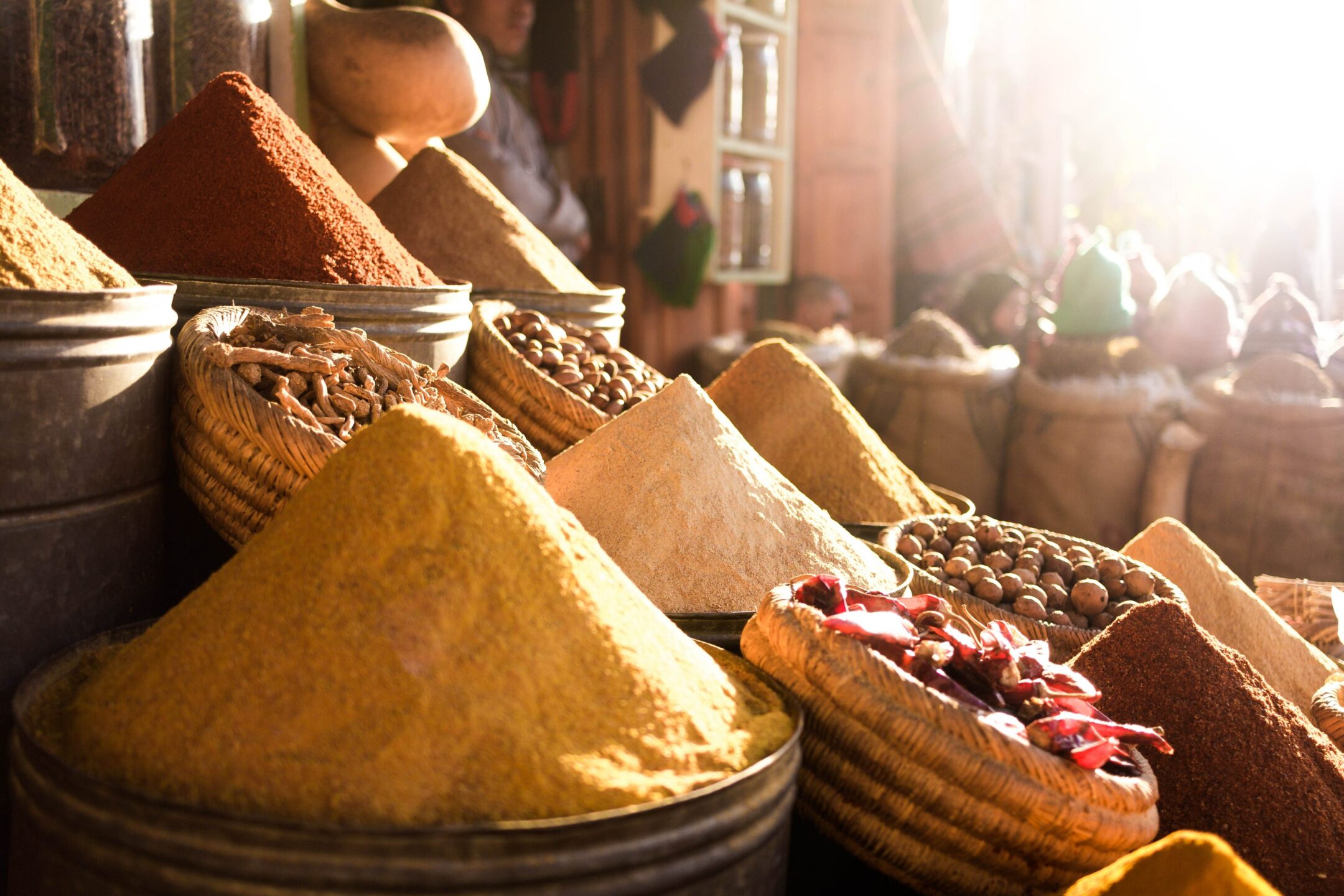
Visit an incredible and authentic Moroccan pharmacy on Citylife’s South Morocco & African Adventure trips! See all upcoming Morocco tours in our Morocco Travel Calendar.
You’ll be pleasantly surprised to learn that a pharmacy in Morocco sells natural solutions to any and every possible health problem you might have. On top, they will claim to have the key to all beauty secrets you could imagine. This includes items like various teas, mint/eucalyptus used as a natural decongestant, oils to increase your energy, hair growth and to cure headaches among many other things!
4. Discover the Bahia Palace
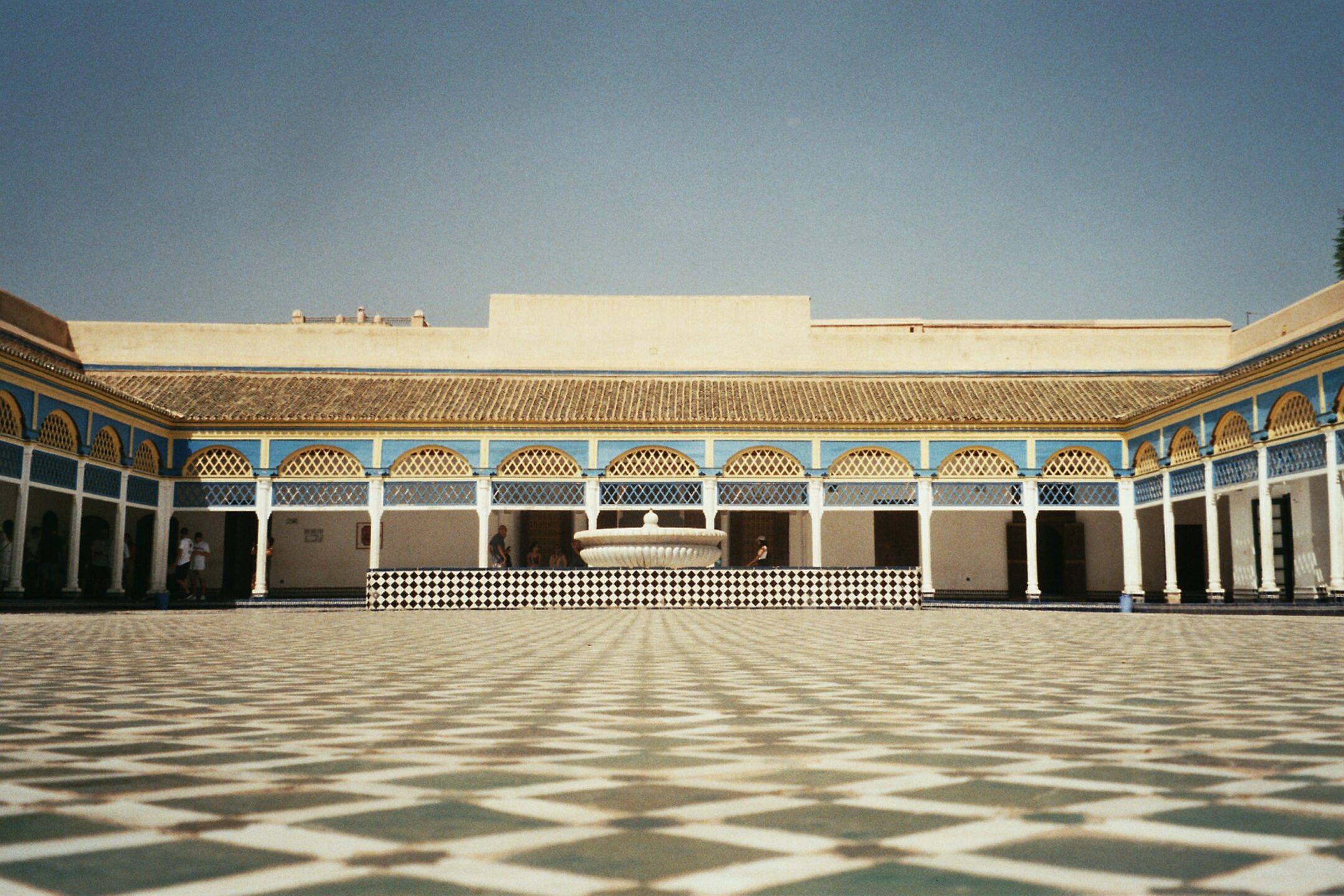
The Bahia Palace is one of the most famous buildings in all of Morocco. This palace is from the nineteenth century, built in 1867. When it was constructed the palace was meant to be the greatest of all time. The palace was constructed for Si Moussa, the grand vizer of the sultan. The tiles and patterns found throughout this palace are extremely impressive. Each room is decorated with a different pattern.
5. Roam the Medina of Marrakech
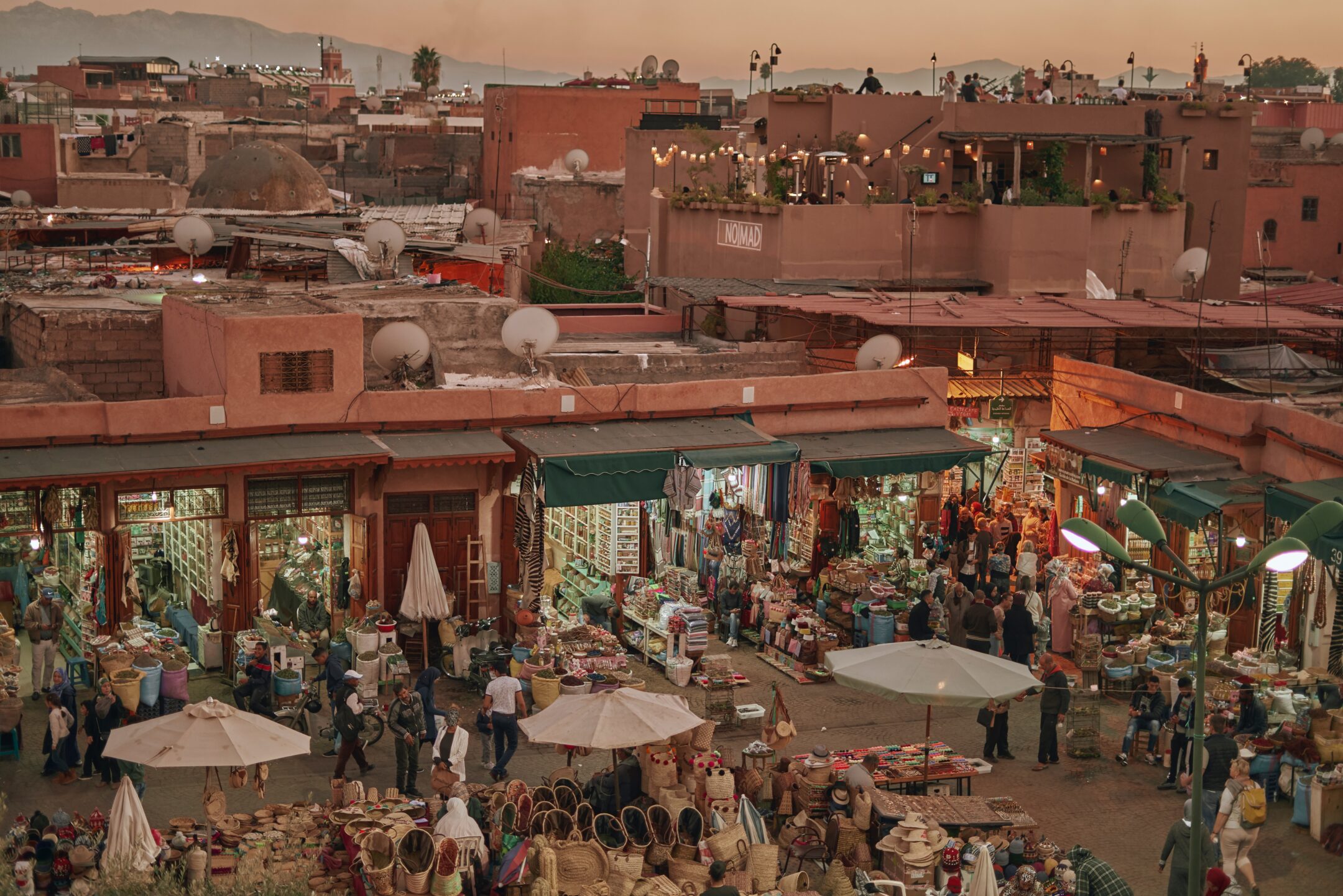
The medina (or souk) in Marrakesh is a group of endless maze-like streets – often covered – filled with a variety of shops and vendors. One of the absolute top things to do in Marrakesh is to spend the afternoon wandering through the shops, haggling with the locals for the best prices for souvenirs, leather goods or decor items for your home!
6. Explore the Majorelle Gardens
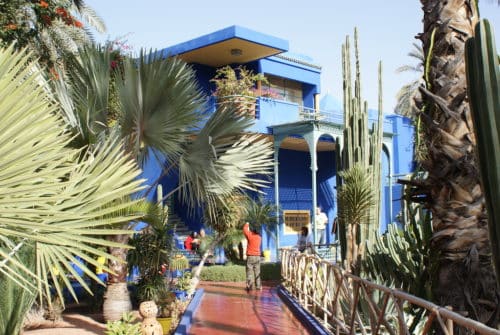
This garden is one of the most relaxing palaces that you can visit in the busy city of Marrakech. The French painter, Jacques Majorelle created this garden, working on it for over forty years. The garden houses many trees, a stream, pools of water with many different types of flowers, and an amazing crew of birds that hang out there. With exotic cacti and plants, the garden is about 2.5 acres large.
7. Stroll Through the El Badi Palace
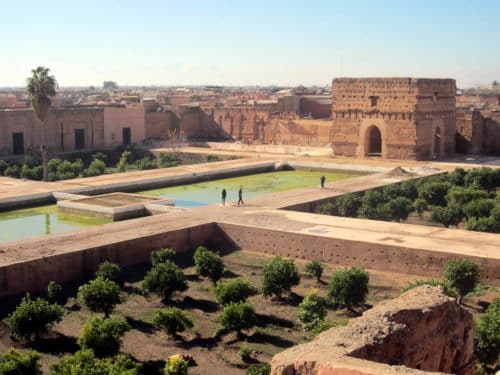
El Badi Palace, completed in 1593, is now a ruined palace in Marrakech. “Badi” means “incomparable,” and this name is meant to show how grand the palace was at its time of construction. This palace once had over 360 different rooms, all beautifully decorated, a courtyard, and a pool. Near the grounds of the palace, there is also a museum that has different artifacts from Marrakech in general.
8. Indulge in Moroccan Cuisine
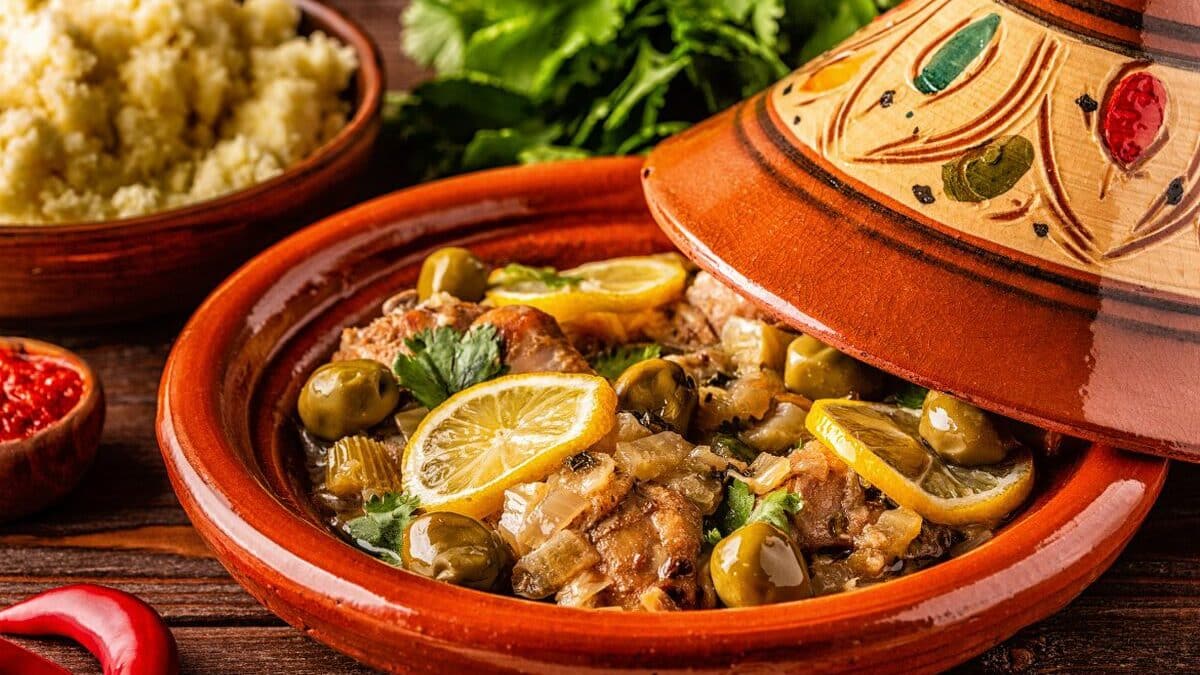
Experience a traditional night of Moroccan food and music on Citylife’s South Morocco & African Adventure trips! See all upcoming Morocco tours in our Morocco Travel Calendar.
Moroccan food is rich in flavour, colour and offers an incredibly sensory experience no matter where you go. Make sure to take advantage of the delicious restaurant locations in Marrakesh’s medina and try the top Moroccan food the city has to offer! From traditional tagine and couscous to the famous Moroccan salad, there is something for everyone!
9. Admire the Saadian Tombs
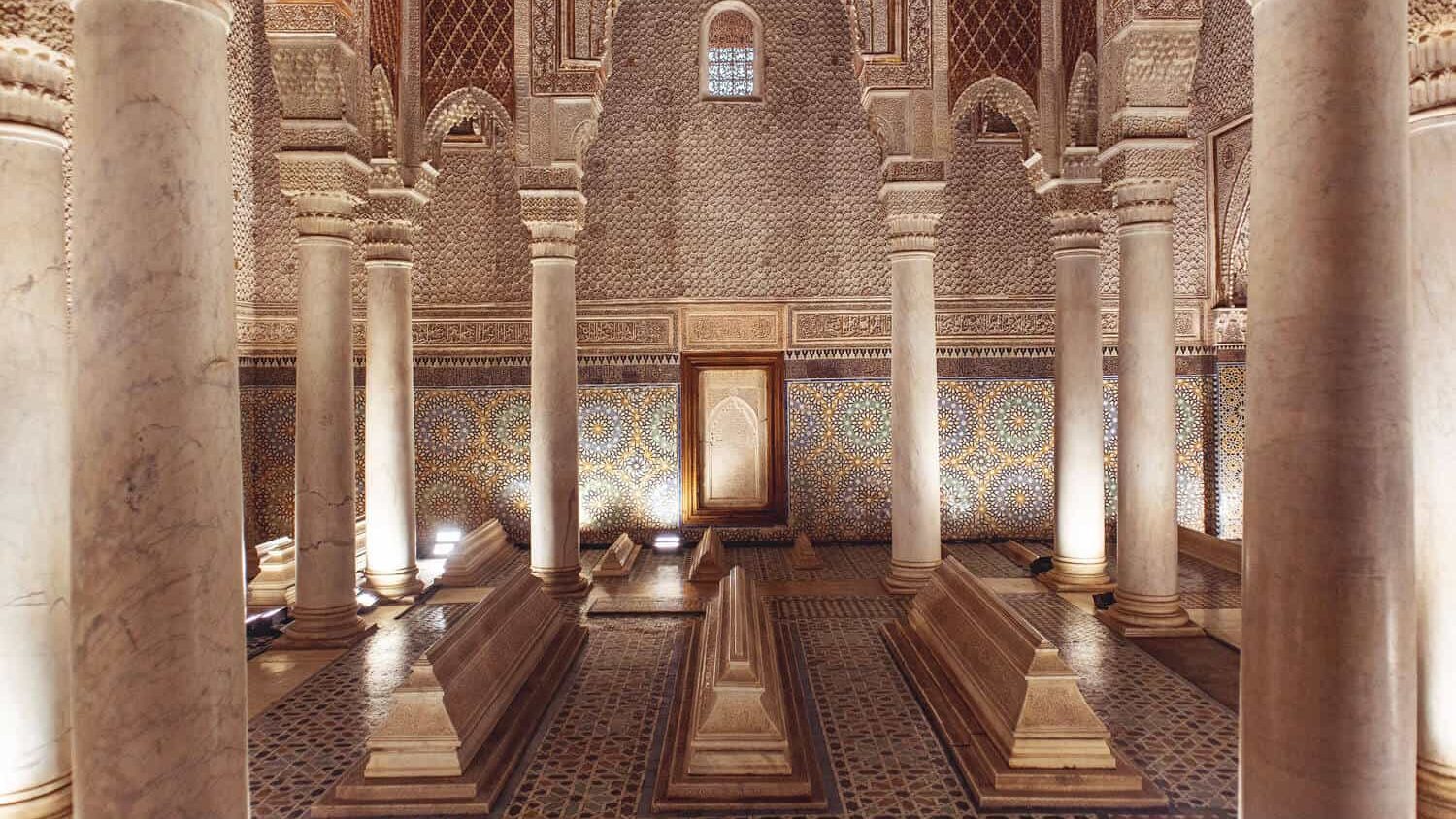
Visit the impressive resting place of one of Morocco’s most important ruling families. The Saadian Tombs are made up of exquisite mausoleums that are decorated in delicate carvings, colourful tiles and beautiful gardens. all of which are impressively lit by natural light, thanks to the strategically placed windows throughout the tomb.
10. Experience a Hammam Ritual
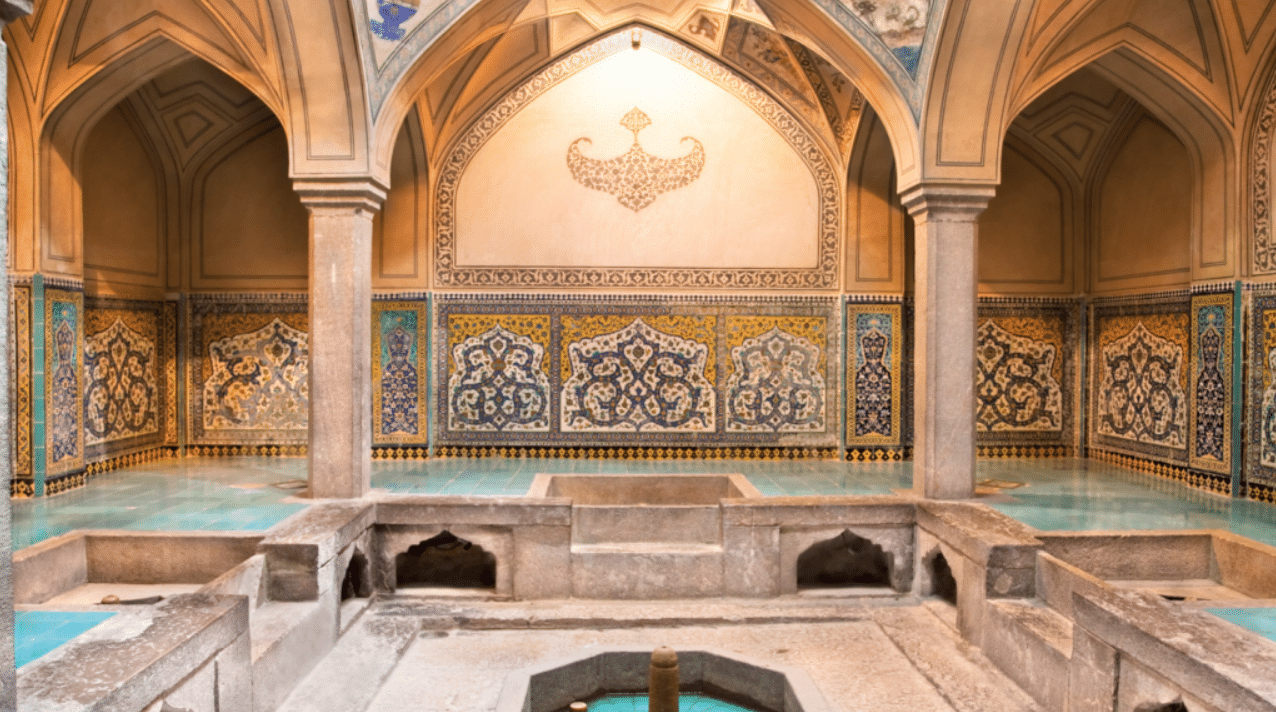
Treat yourself to a traditional and emmersive Moroccan wellness tradition by visiting a Hammam. This is no typical spa, as it incorporates calming sounds, smells and sites in addition to the delicious thermal baths and scrubbing ritual with local Moroccan soaps and oils. If you have some extra time in your itinerary, this is defintely one of the best things to do in Marrakesh if you want a taste of Moroccan culture while treating yourself to some down time!
11. Explore the Dar Si Said Palace
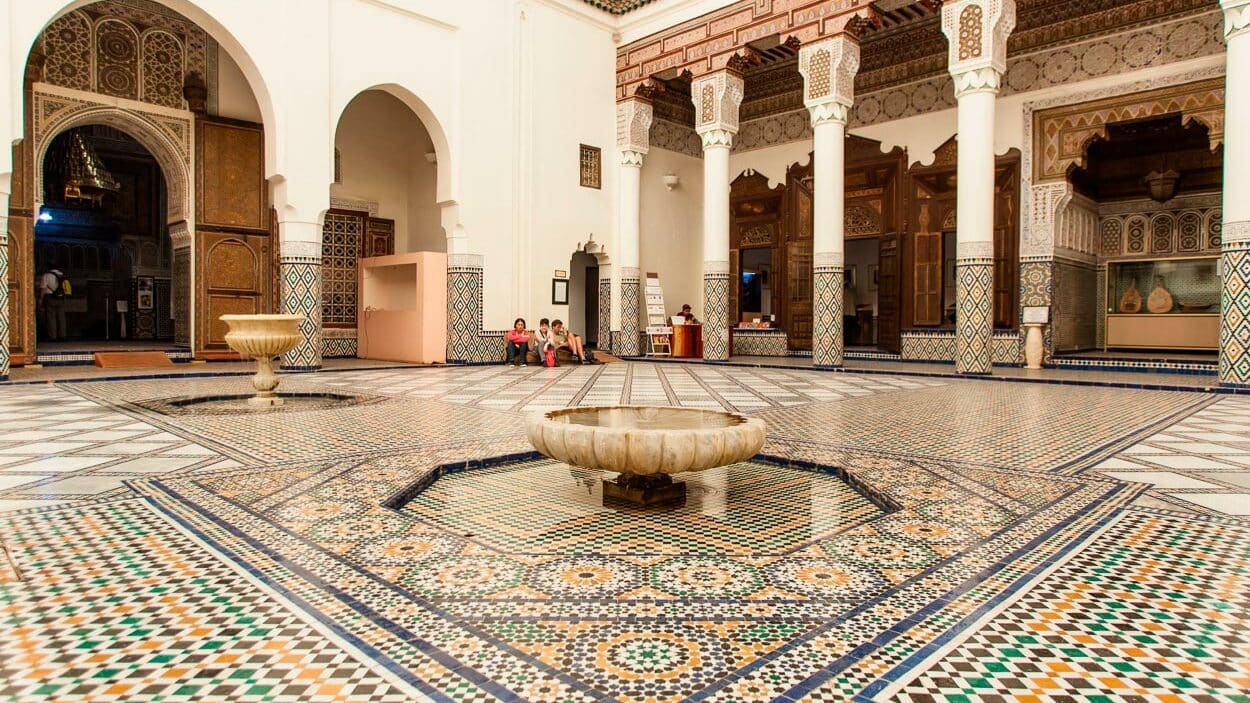
Visit the beautiful Dar Si Said Palace on Citylife’s South Morocco & African Adventure trips! See all upcoming Morocco tours in our Morocco Travel Calendar.
This palace offers a similar design and layout as the famous Bahia Palace. But in addition to its lush gardens and gorgeous tilework the Dar Si Said Palace offers several exhibitions displaying traditional Berber clothing, carpets, artifacts, weapons, ceramics and other incredible pieces that offer a look into the history of Morocco’s original people.
12. Wander the Streets of the Mellah
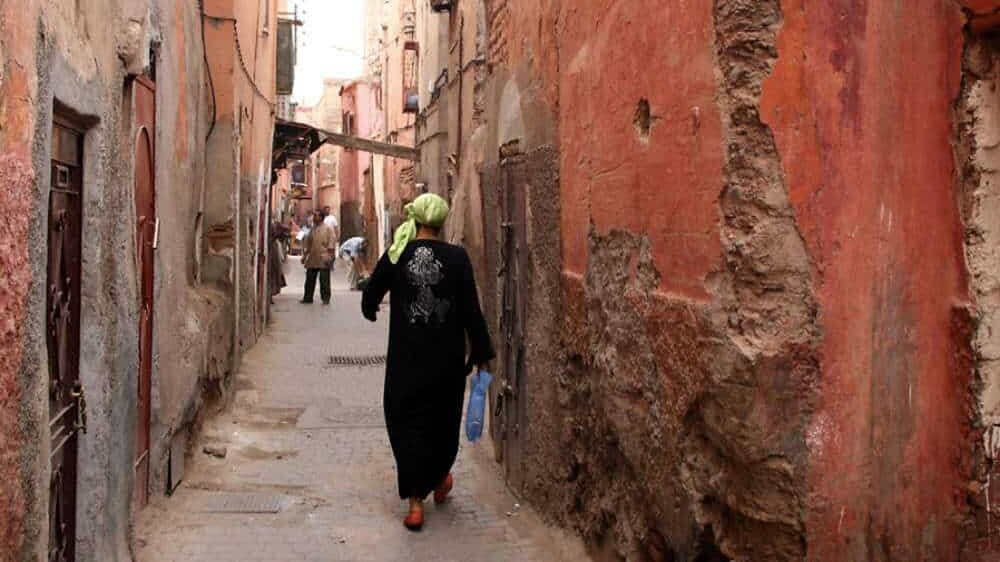
The Mellah, also known as Marrakesh’s Jewish Quarter, is nestled between two of Morocco’s historic palaces (El Badi and La Bahia). This is no mistake, as Morocco’s past kings strived to protect their Jewish community. Now, the neighbourhood is a quiet suburb, being home to several winding residential streets and several historic synagogues that are open to the public today.
13. Marvel at the Yves Saint Laurent Museum
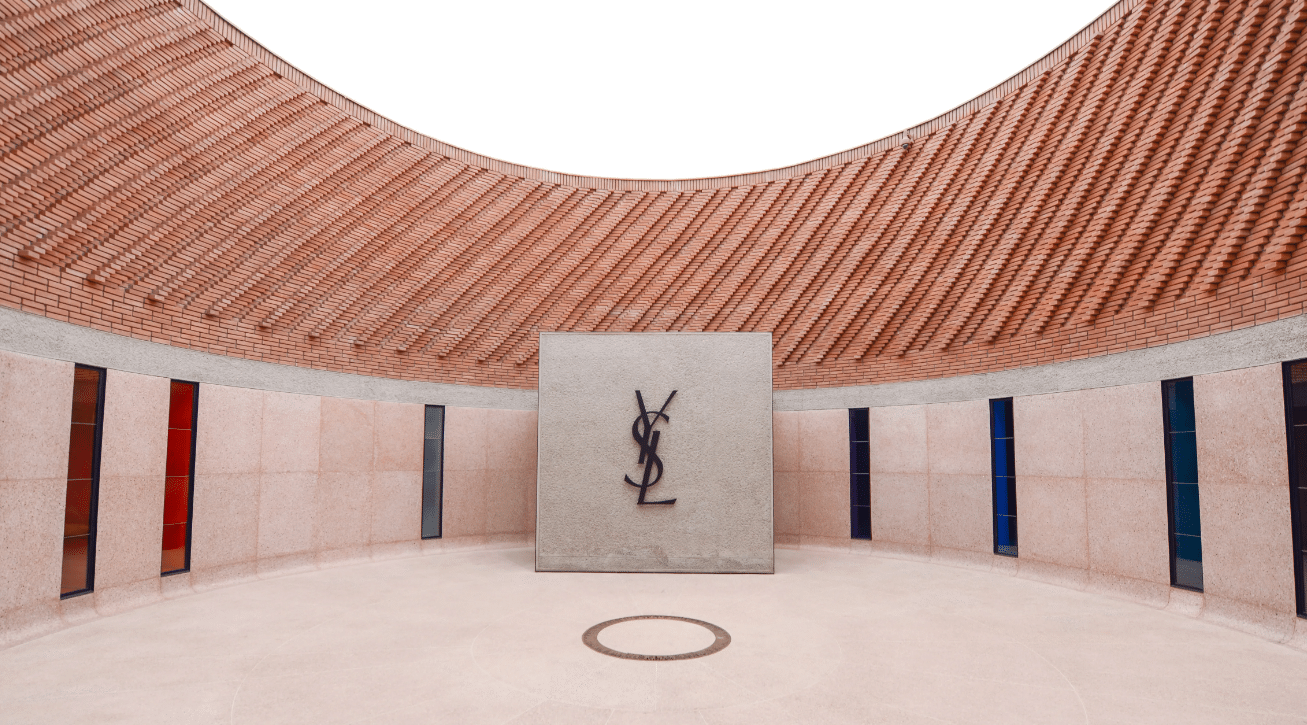
Pay homage to the fashion icon at the Yves Saint Laurent Museum. The museum marks a tribute to his legacy showcasing his creative genius and the profound influence that Morocco had on his work as well as the influence that his work had on Morocco.
Plan Your Own Trip to Marrakesh!
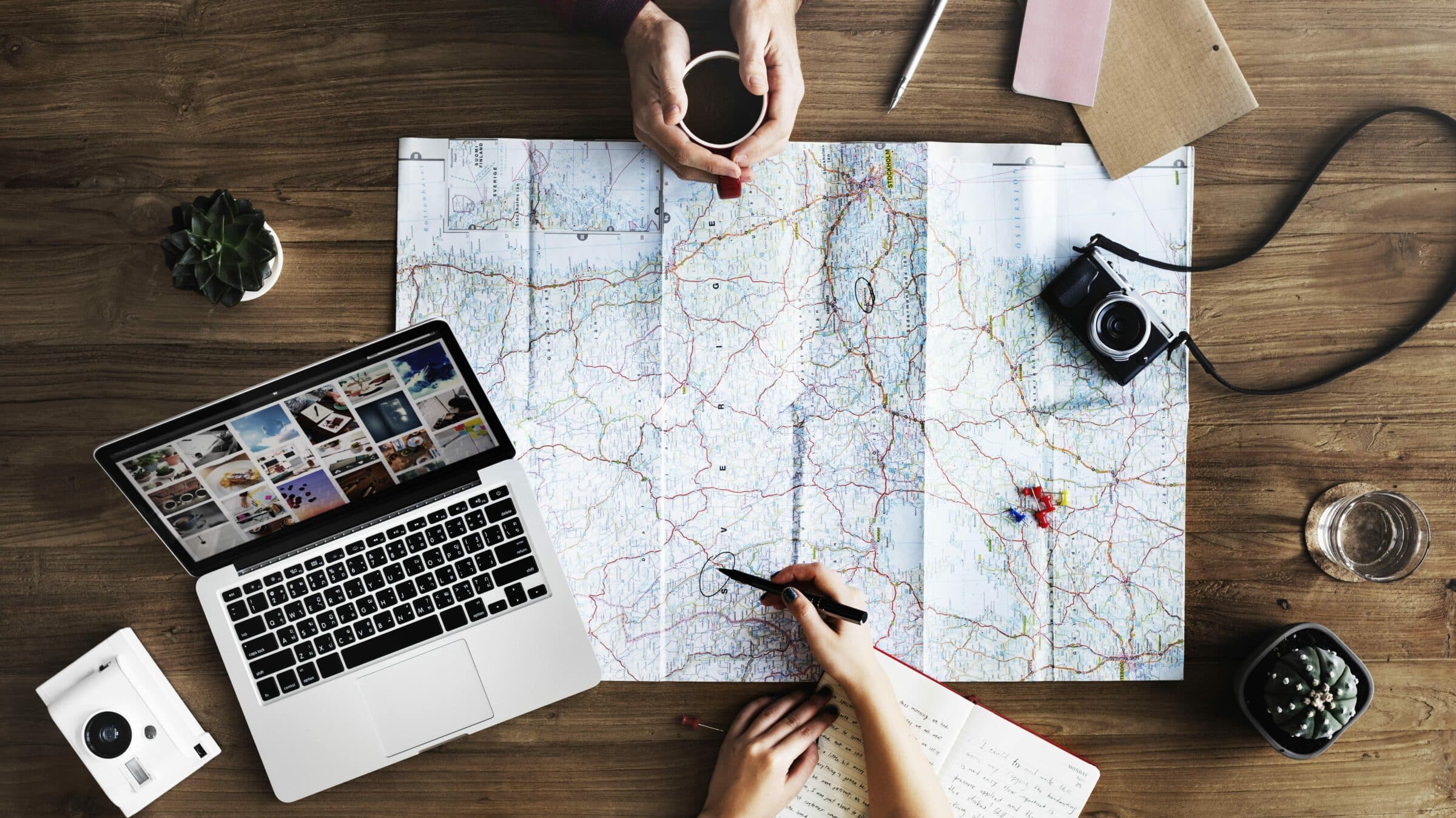
If you’re going to visit Morocco you should defintely do some planning beforehand! In this section, we’ll walk you through two of our recommended itineraries based on our many years of experience visiting The Red City! The first, a delightful 3 day trip that anyone can enjoy over a weekend and the second, an immersive 5 day adventure – ensuring that you don’t miss a single moment of the city’s allure. So, dust off travel your boots and get ready to unravel the secrets of Marrakesh!
Want to leave the hassle of planning and booking a trip to Marrakesh to the experts? Then check out Citylife’s incredible Morocco tour Packages! Take a look at all the trips we have in store and feel free to reach out to us with any inquiries about our packages.
Things to do in Marrakesh: A 3 Day Plan
Day 1: Exploring the Heart of Marrakesh
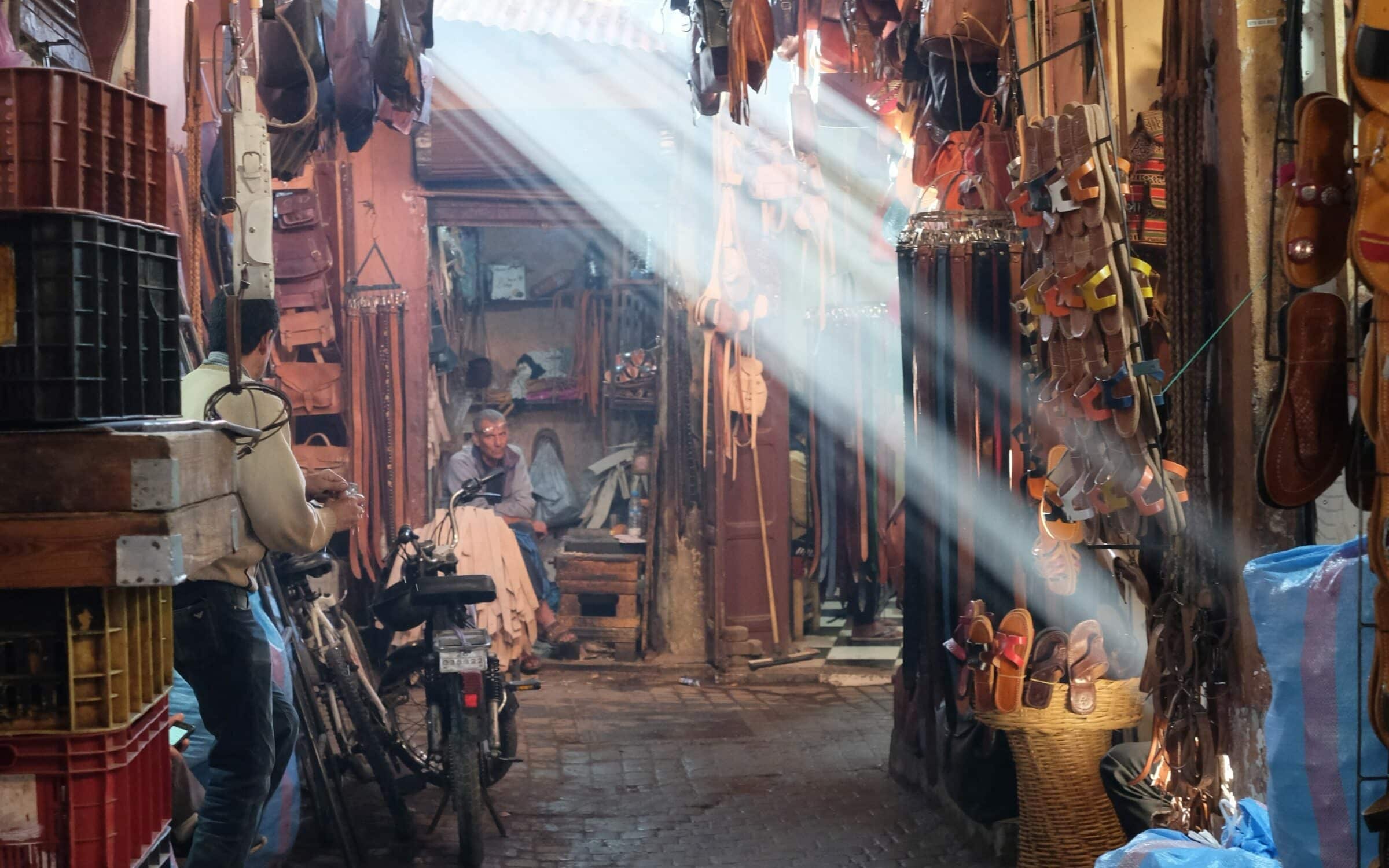
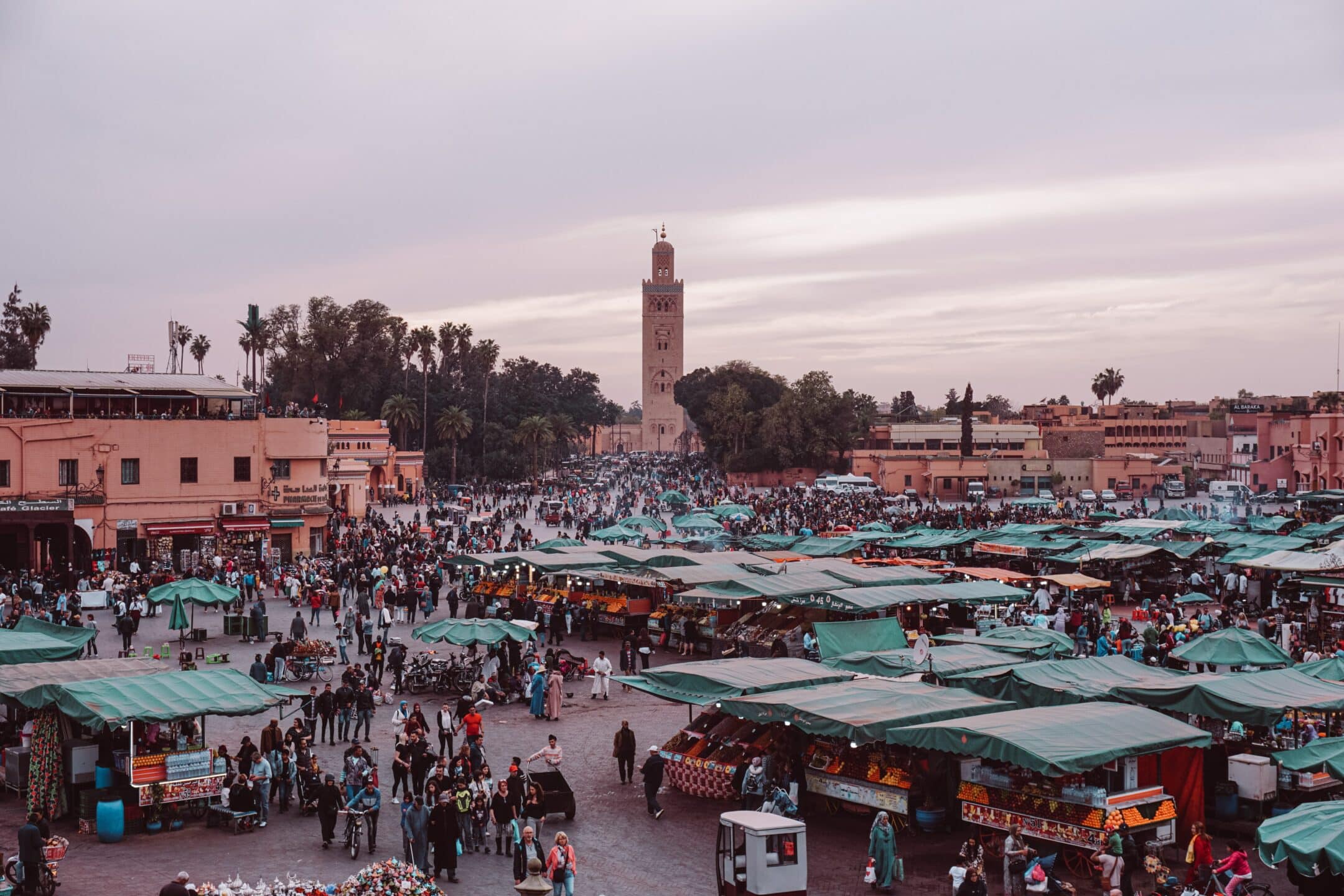
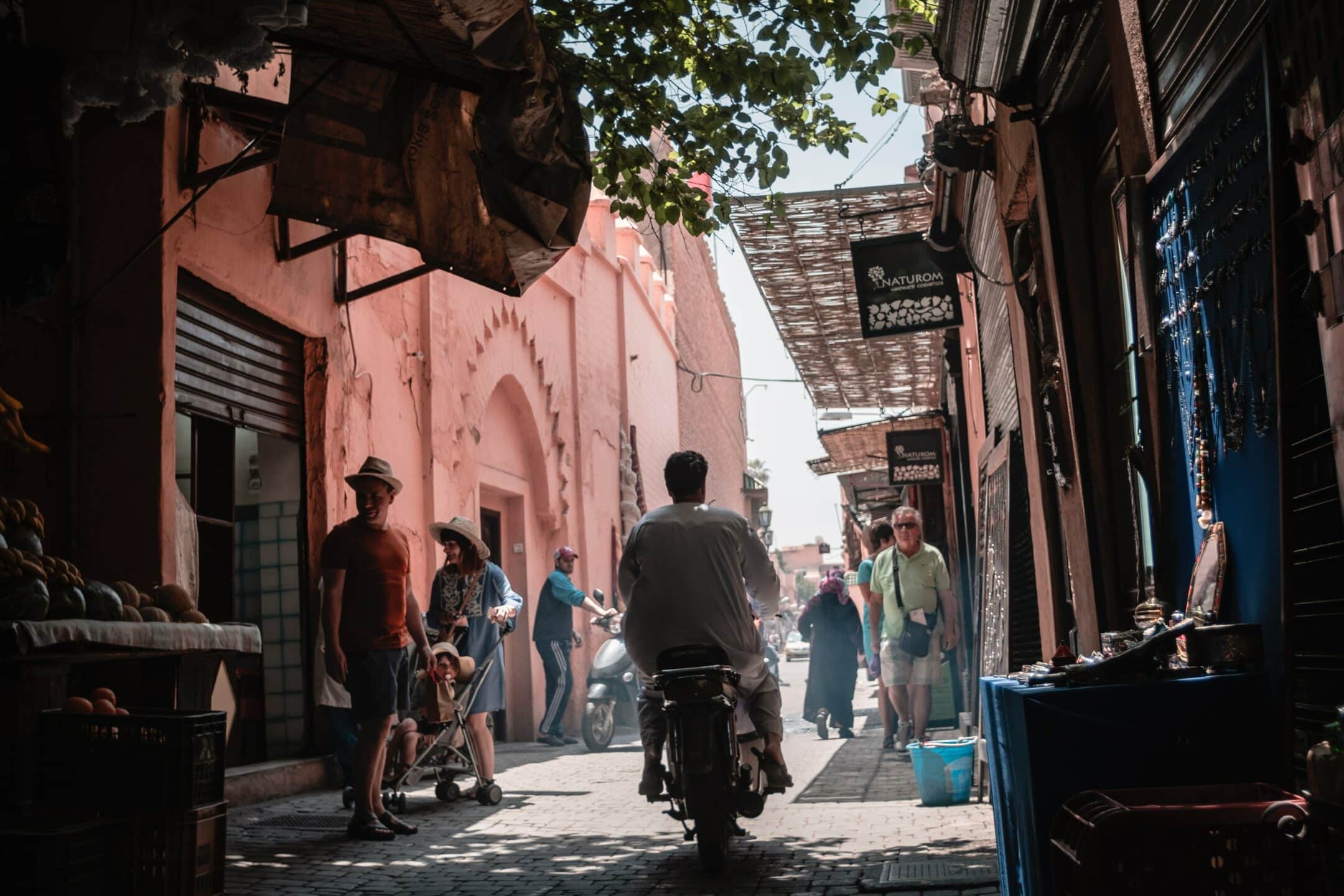
Morning: Start your day with a traditional Moroccan breakfast either at your hotel/riad or at a local cafe. Make sure to try the freshly baked bread, honey, olives, and a steaming cup of mint tea – a true local treat! Afterwards, head straight to the heart of the city, Jemaa el-Fna square, where the locals will be setting up thier stalls and preparing for the day! Here you can wander through the vendors, try some freshly squeezed fruit juice (be careful as this might upset your stomach!) and pick up some classic souvenirs.
Afternoon: Spend your afternoon exploring the many alleys of the Marrakesh medina, a UNESCO World Heritage site. Immerse yourself in the bustling souks, where you’ll find everything from vibrant textiles and intricate carpets to aromatic spices and handcrafted jewelry. Don’t be afraid to speak to the locals about their products, to bargain with them and to ask for samples from the pharmacies and sprice shops before you buy!
Evening: After some well deserved rest back at your hotel/riad, get ready to return to the exciting Jjemaa el-Fna Square! In the night, the square transforms into a mesmerizing spectacle of sites, sounds and smells! Enjoy a variety of Moroccan street food (bbq meats, vegetables, cousous and more!) from the various stalls for dinner and enjoy an evening of entertainment as the square comes a live with snake charmers, traditional musicians, and storytellers.
Day 2: Palaces, Gardens, and Serenity
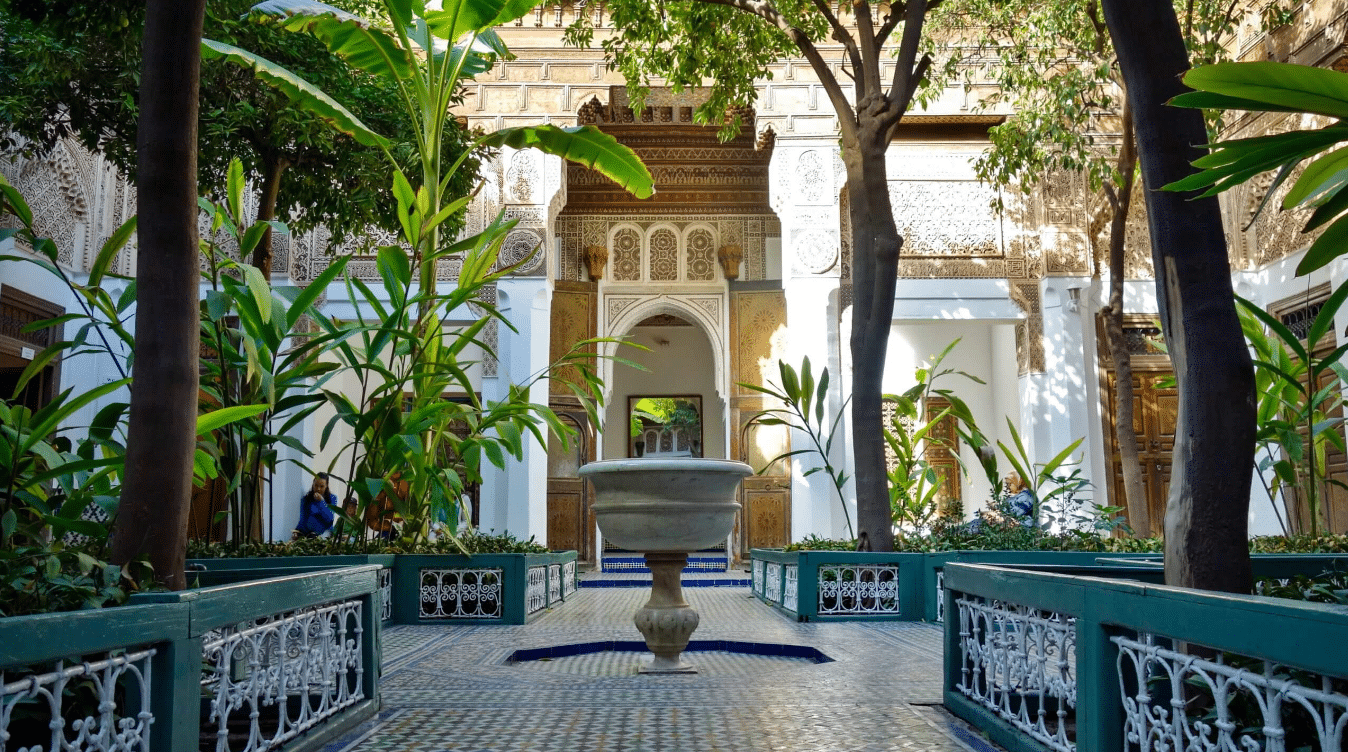
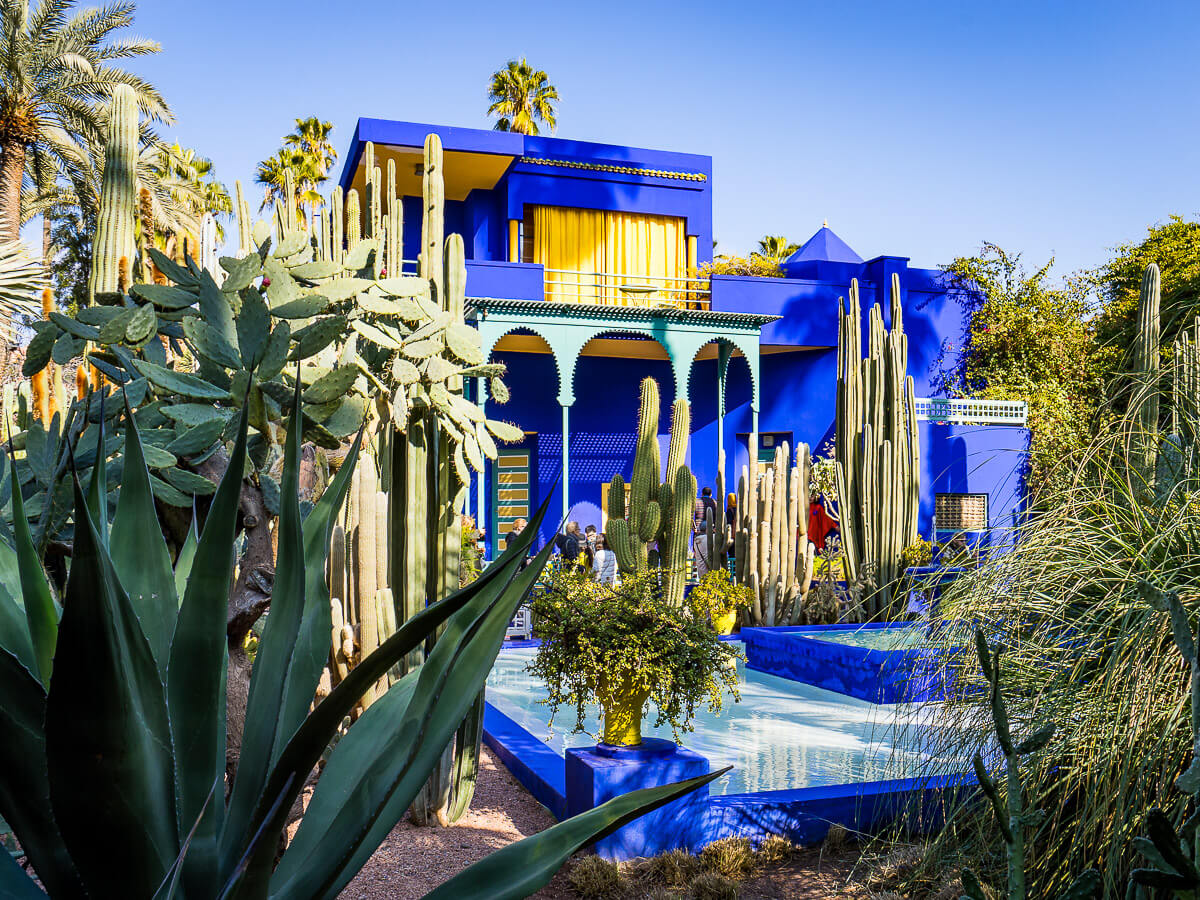
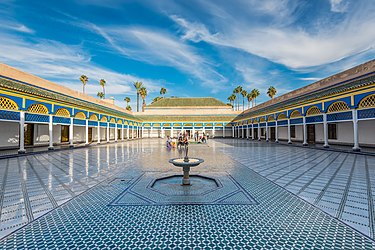
Morning: After another local breakfast, venture to the famous Bahia Palace – an architectural masterpiece adorned with colorful tiles, intricately carved ceilings, and lush gardens. Discover the history of the Moroccan royalty who once resided at the palace and wander through its enchanting rooms and courtyards.
Afternoon: Keep the opulence, peace and tranquility going by spending the afternoon at the Majorelle Gardens. Designed by French painter Jacques Majorelle, the garden is a serene oasis featuring cobalt blue structures, cacti, and exotic plants. Take a leisurely stroll through this tranquil haven and visit the Yves Saint Laurent Museum on-site to learn about the fashion icon’s connection to Marrakesh.
Evening: Continue relaxing and unwinding with a traditional Moroccan hammam spa experience before enjoying dinner at one of the many gorgeous restaurants that are located around the Jemaa el-Fna square. We reccommend places like Al Baraka, Zeitoun Cafe and Le Marrakchi.
Day 3: Escape the City
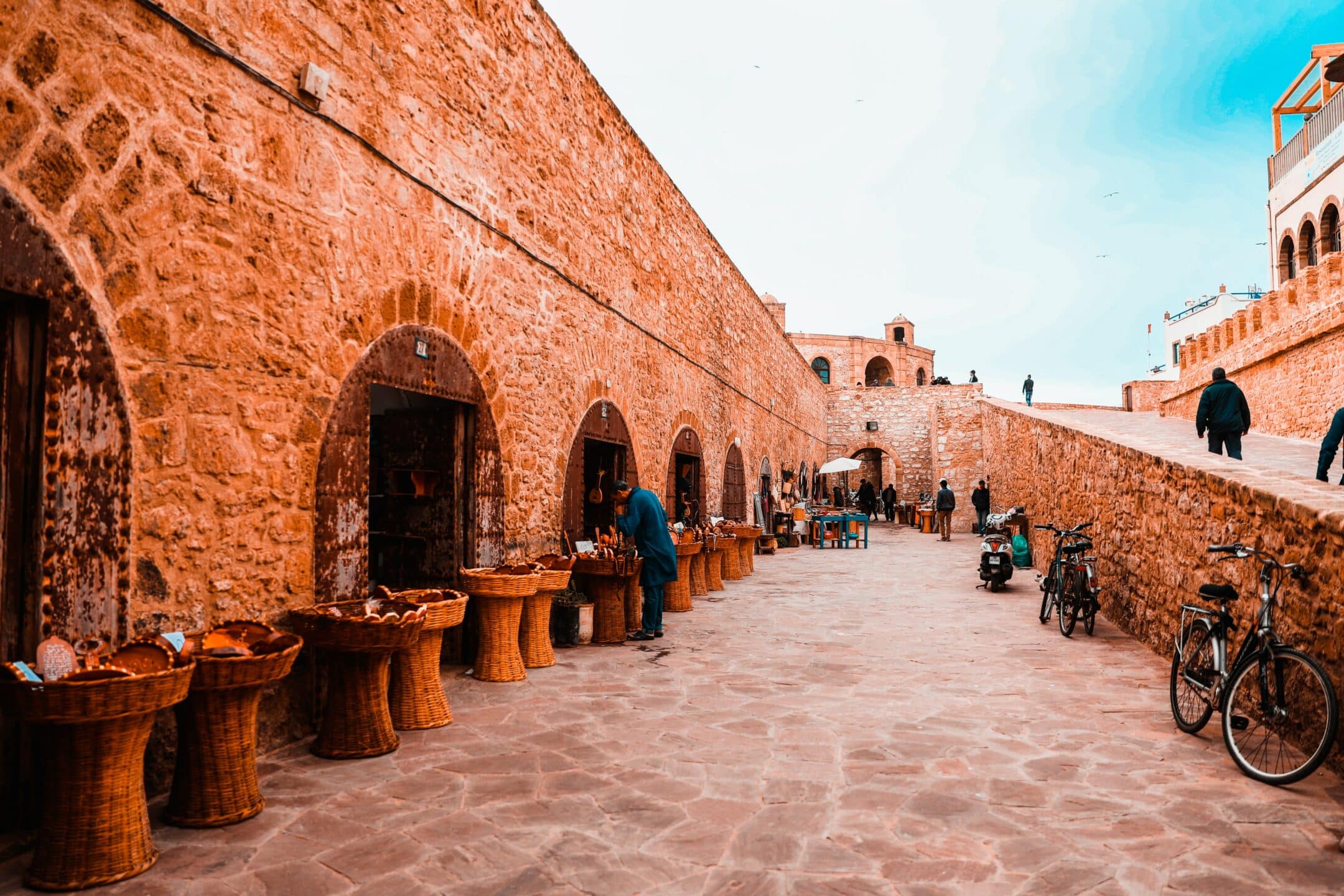
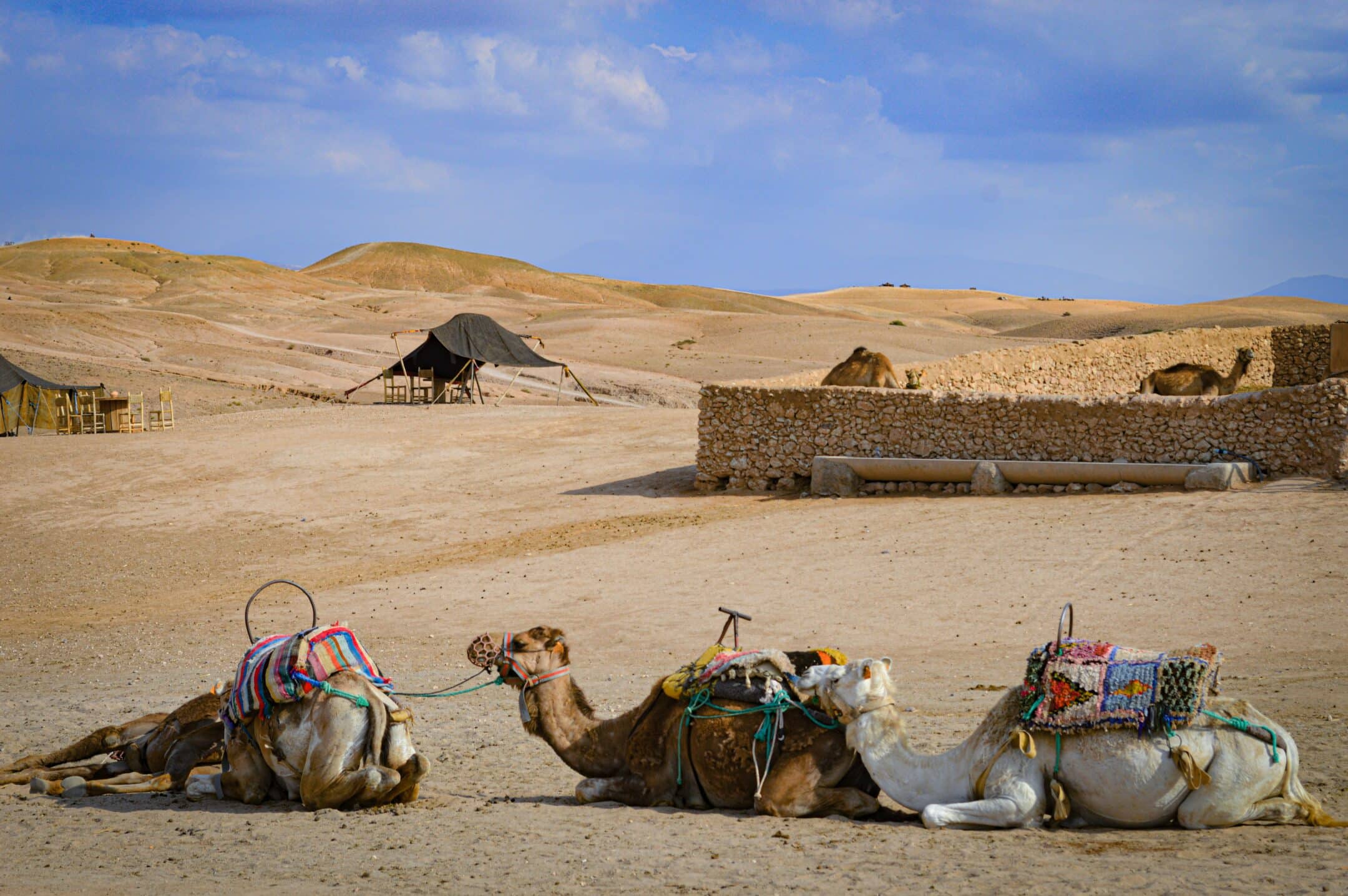
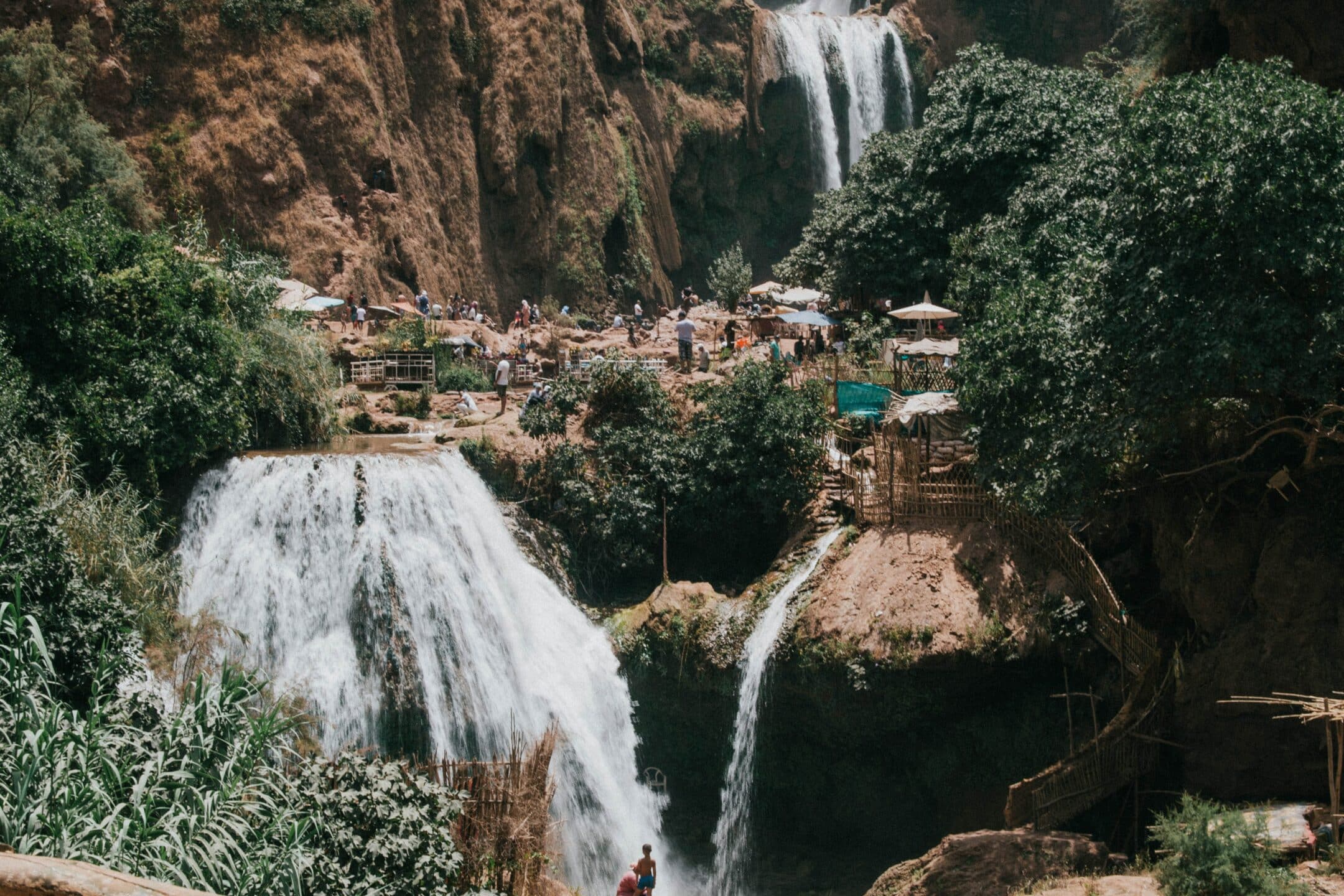
Morning & Afternoon: Take advantage of the day and explore some of the amazing locations just outside of Marrakesh. Amazing places to vist include Essaouria (a medieval coastal town), Agafay Desert (where you can ride camels/quads and enjoy lunch in a campsite) and the Ouzoud waterfalls. Your hotel/riad may offer such tours or can at least recommend a trusted tour agency.
Evening: Return to Marrakesh and spend your final evening at another one of Marrakesh’s lovely restaurants or revisiting the unbeatable energy of the food market in the Jemaa el-Fna square.
Things to do in Marrakesh: A 5 Day Plan
Day 1: Discovering the Heart of Marrakesh
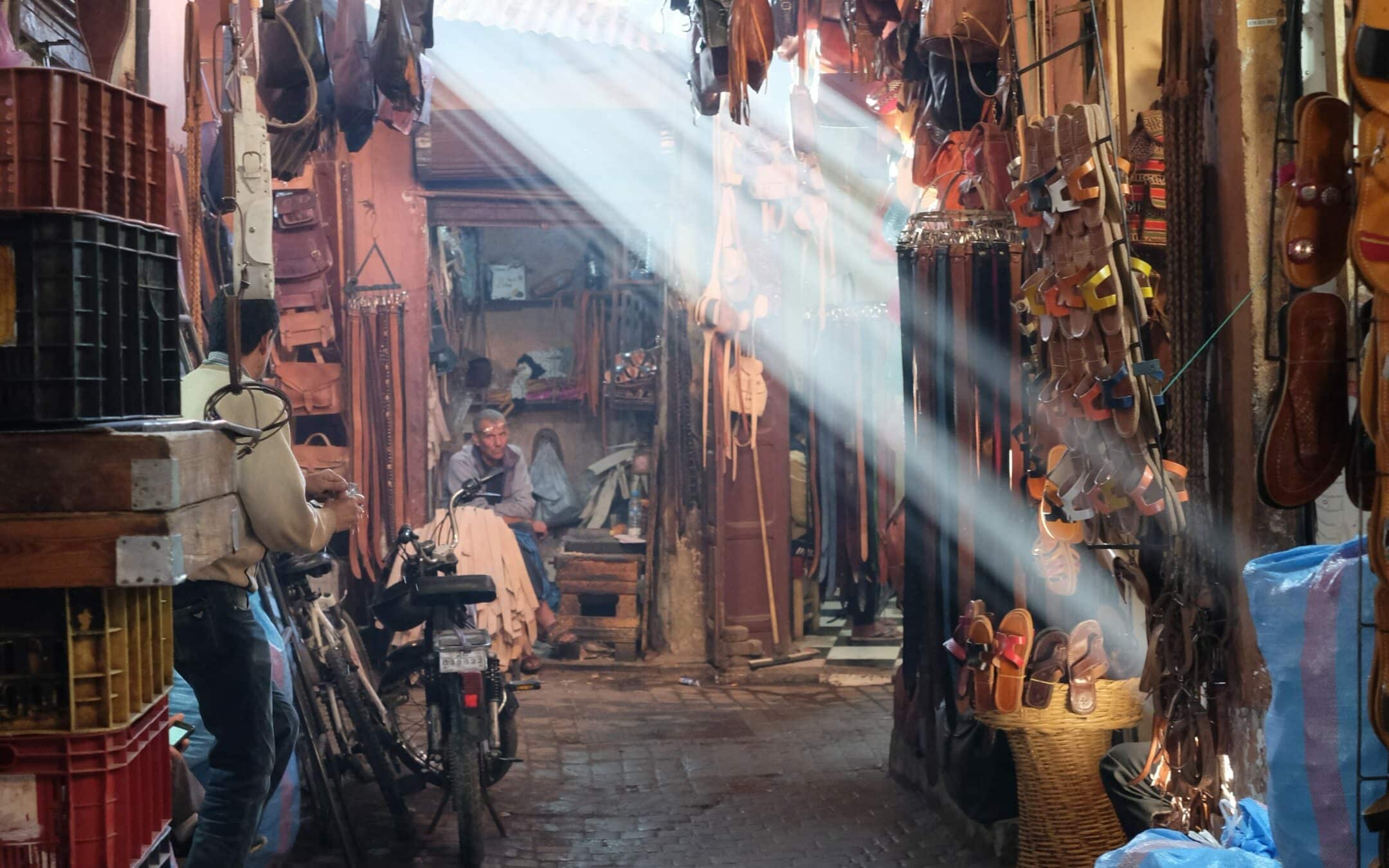


Morning: Start your day with a traditional Moroccan breakfast either at your hotel/riad or at a local cafe. Make sure to try the freshly baked bread, honey, olives, and a steaming cup of mint tea – a true local treat! Afterwards, head straight to the heart of the city, Jemaa el-Fna square, where the locals will be setting up thier stalls and preparing for the day! Here you can wander through the vendors, try some freshly squeezed fruit juice (be careful as this might upset your stomach!) and pick up some classic souvenirs.
Afternoon: Spend your afternoon exploring the many alleys of the Marrakesh medina, a UNESCO World Heritage site. Immerse yourself in the bustling souks, where you’ll find everything from vibrant textiles and intricate carpets to aromatic spices and handcrafted jewelry. Don’t be afraid to speak to the locals about their products and to bargain with them and to ask for samples from the pharmacies and sprice shops before you buy!
Evening: After some well deserved rest back at your hotel/riad, get ready to return to the exciting Jjemaa el-Fna Square! In the night, the square transforms into a mesmerizing spectacle of sites, sounds and smells! Enjoy a variety of Moroccan street food (bbq meats, vegetables, cousous and more!) from the various stalls for dinner and enjoy an evening of entertainment as the square comes alive with snake charmers, traditional musicians, and storytellers.
Day 2: Exploring Historic Marrakesh


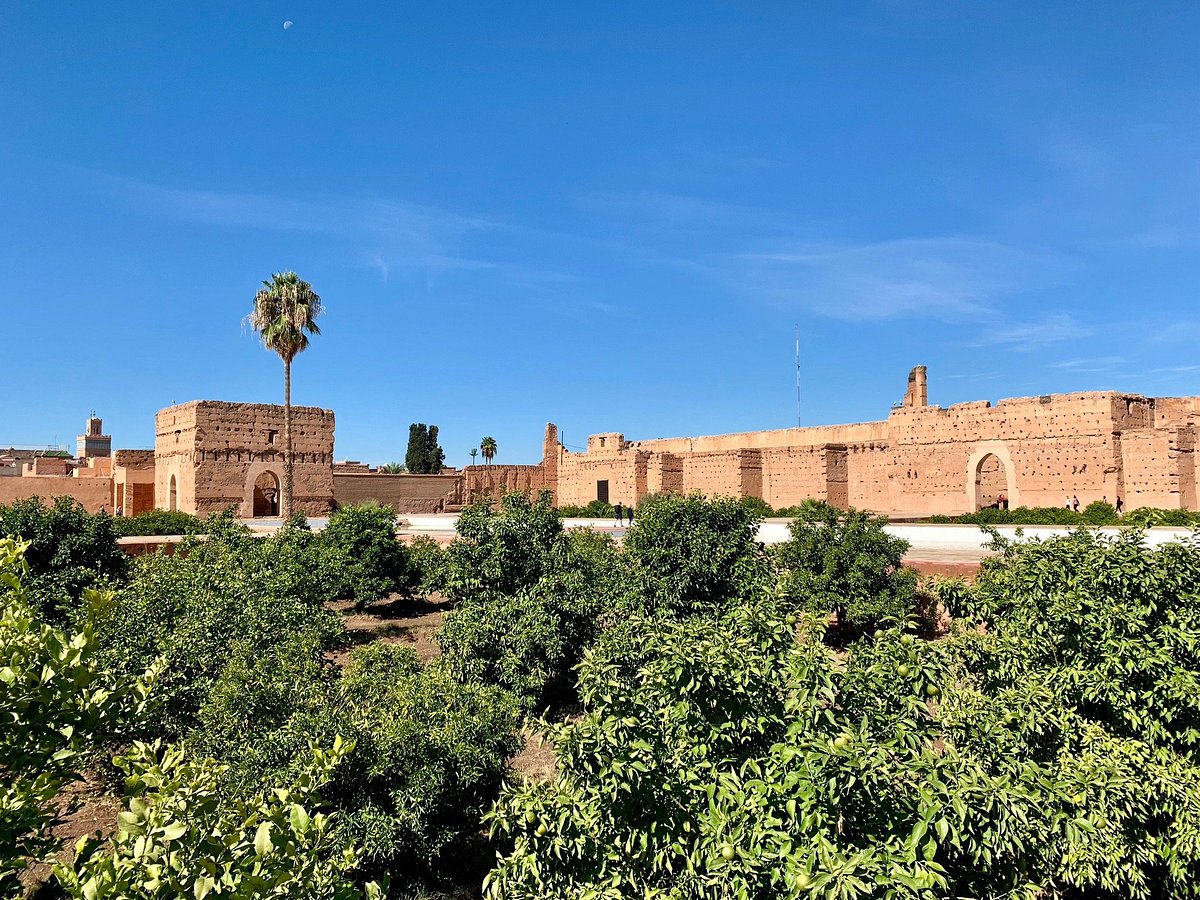
Morning: After another local breakfast, venture to the famous Bahia Palace – an architectural masterpiece adorned with colorful tiles, intricately carved ceilings, and lush gardens. Discover the history of the Moroccan royalty who once resided at the palace and wander through its enchanting rooms and courtyards.
Afternoon: Head to the area of Marrakesh known as “The Kasbah” and prepare to discover gems from Morocco’s past. Located right next to each other are the famously beautiful Saadian Tombs (the resting place of a dynasty of Morrocan kings) and the ruins of the colossal Badi Palace. In this area of the city you will also find several restaurants to enjoy lunch.
Evening: After a busy day filled with walking, exploring and discovering treat yourself to a relaxing dinner at one of the many gorgeous restaurants that are located around the Jemaa el-Fna square. We reccommend places like Al Baraka, Zeitoun Cafe and Le Marrakchi.
Day 3: Agafay Desert Experience
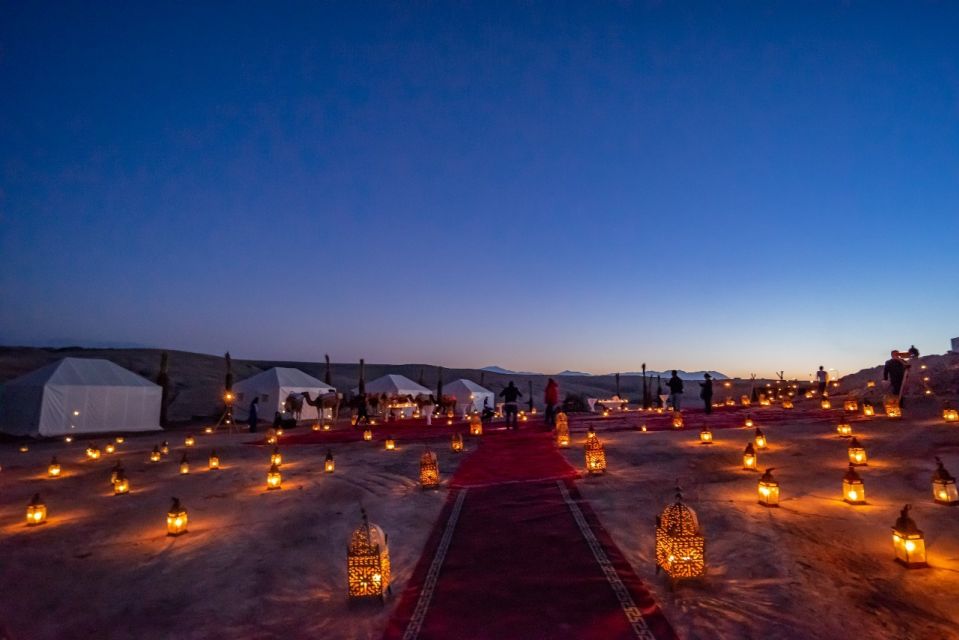

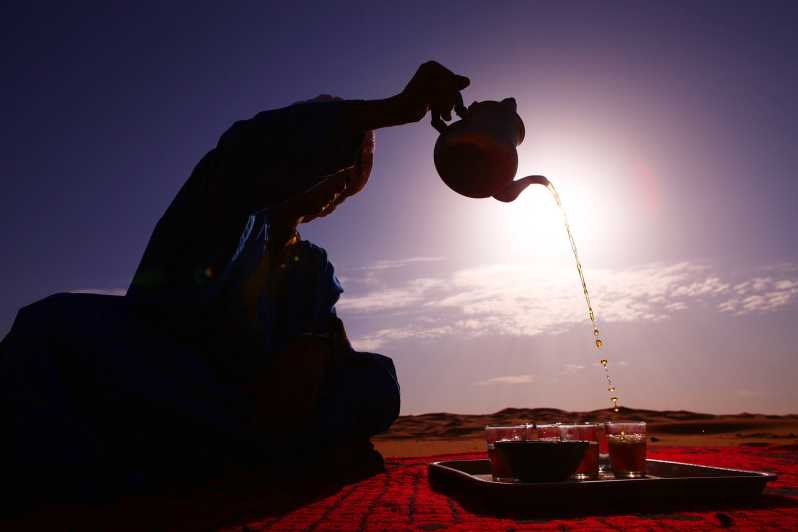
Take advantage of the amount of time you have in Morocco and take an overnight trip to the desert! Though it’s not as impressive as the Sahara desert, the Agafay desert is just one hour from Marrakesh, making it much easier to fit into any itinerary! Tours vary from day trips to overnight trips and in addition to transportation often include things like camel rides, quad rides, dinner experiences and luxury camping experiences. Your hotel/riad may offer such tours or can at least recommend a trusted tour agency.
Have you always wanted to visit the incomparable Sahara Dessert? Then make sure you join Citylife on our South Morocco or African Adventure trip packages! On these amazing journeys we will spend the night among the famous orange dunes of the Sahara for an experience you will truly never forget. See all upcoming Morocco tours in our Morocco Travel Calendar.
Day 4: More Desert Fun & Return to Marrakesh
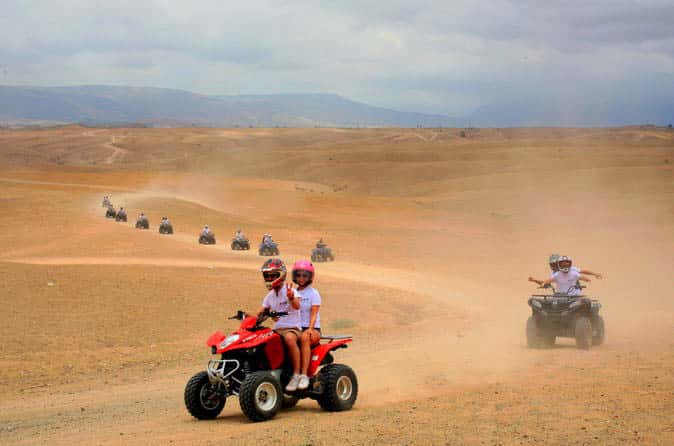
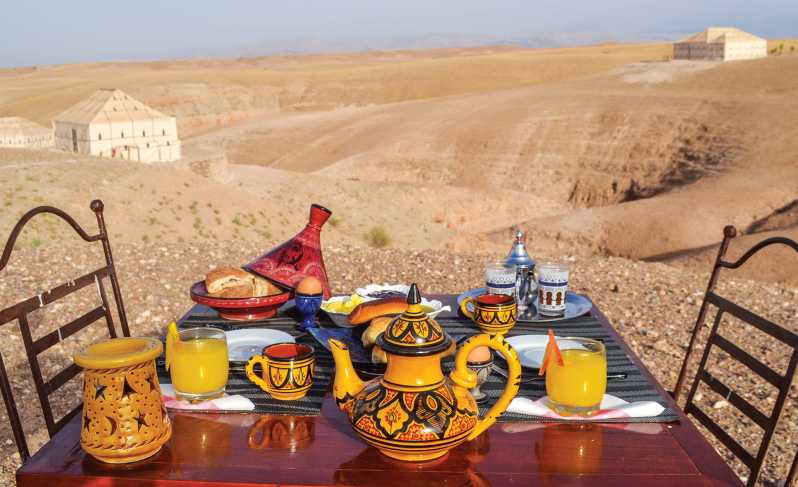

Morning: Enjoy your breakfast at your desert camp as well as any kind of activity the tour operator might have in store. Most tours will head back to Marrakesh around the early afternoon so once back you’ll have time to refesh, relax and prepare for a lovely Marrakesh evening.
Afternoon: Either spend the afternoon relaxing at your hotel/riad or use the time to enjoy a traditional Moroccan hammam spa experience. Enjoy a steam bath, exfoliating scrub, and a soothing massage to unwind after your time in the desert.
Evening: Spend the evening relaxing at your hotel/riad or head out to enjoy dinner in the city.
Day 5: Art, Gardens & Farewell



Morning/ Afternoon: After another local breakfast, spend your final day in Marrakesh at the Majorelle Gardens. designed by French painter Jacques Majorelle, the garden is a serene oasis featuring cobalt blue structures, cacti, and exotic plants. Take a leisurely stroll through this tranquil haven and visit the Yves Saint Laurent Museum on-site to learn about the fashion icon’s connection to Marrakesh.



